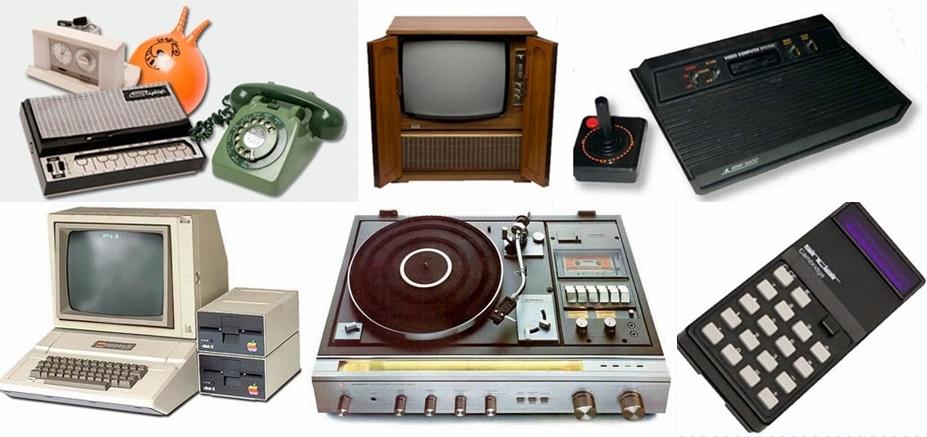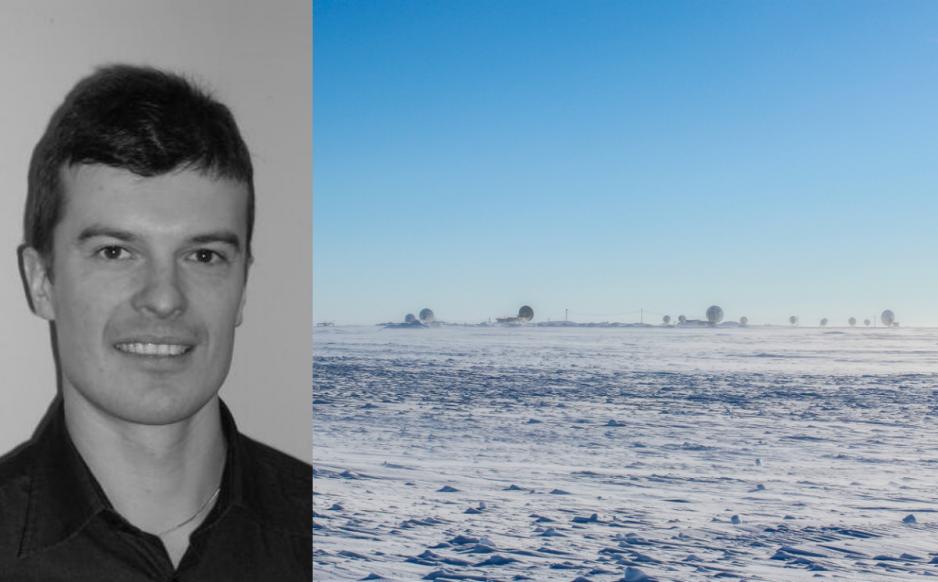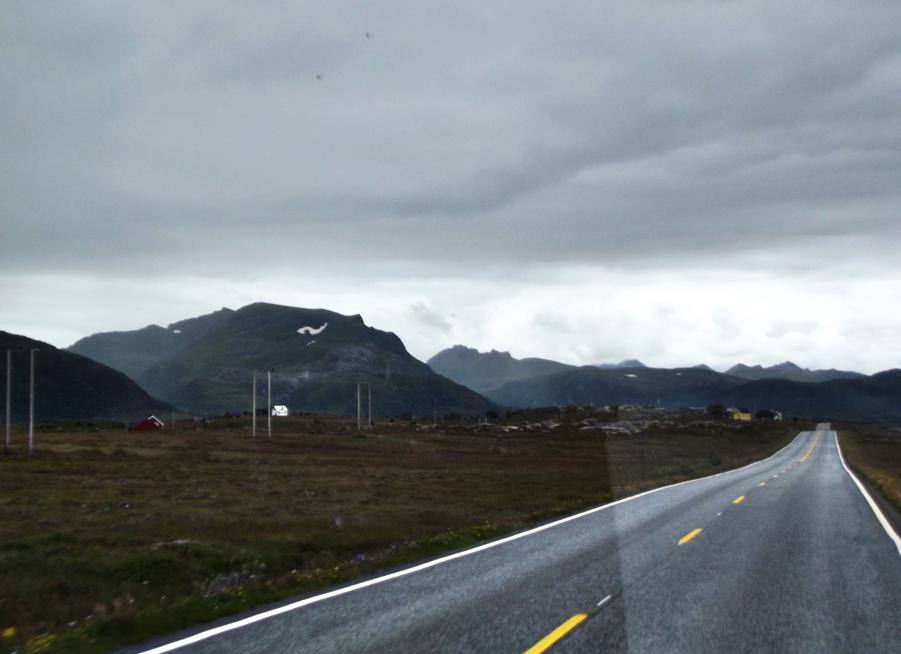Lack of Telecommunications Stops Business in the Arctic

The current telecommunication coverage and infrastructure in the Arctic is sparse and unreliable. - Companies cannot sustain their business, leaving small villages with only old people and with shrinking social service, says Senior researcher Rickard Nilsson at Luleå University of Technology (LTU)
Along with researchers from the Centre for Wireless Communications at University of Oulu, Finland and the Signal Processing group at Luleå University of Technology, Sweden, Nilsson is to survey the Arctic Mobile Communications Architecture, financed mainly by regional EU funding, Interreg Nord and regional funding.
- Comparing central cities with rural places in the Arctic North is a bit similar to comparing the situation in cities now and 25 years ago or more, says Nilsson.
He explains how large cities have abundant capacity more or less everywhere and for everyone.
- For example, people are accustomed to watch streamed live high-resolution video that demands high capacity at workplaces, homes and even on the move like in buses and subways. This is a strong and necessary driver for the whole economy in the central parts of the society. In the High North, on the other hand, the situation is often similar to how it looked like in the cities for about 25 years ago, Nilsson says.
In sparsely populated but large areas, including large recreation areas, people and companies often lack sufficient connectivity, even for just phone calls and sms.
- This is the situation at large geographical areas in the Arctic High North. Broadband connection is even worse, leading to that development of new business becomes more challenging, and therefore also the conditions to live there, he says.

Urbanization even stronger
When people and industries in the High North are unable to draw advantages from technology the way people and industries elsewhere can, the strong urbanization trend becomes even stronger.
- Companies cannot sustain their business and have to move. Existing companies get difficulties to recruit new people and convince them move to the north, or stay there, he says.
People in the north move even more into to the cities in the south, especially the young families.
- Leaving small villages with only old people and with shrinking social service, Nilsson says.
Today it is very difficult to develop growing societies or successful business without a state-of-the art communications infrastructure that match other more populated places in the central part of the society.
- Dark cold winters and large huge areas with large distances are already challenging conditions in the Arctic in itself, which we never can change. In such areas, people therefore need at least as good communications infrastructure as in cities in order to have a chance to develop competing societies, which also are attractive to live in for the people, Nilsson express.
Only main urban areas
- In Sweden, for example, good wireless connectivity is only available near the main urban areas and along the main roads, such as European roads E4 and E10. But even in this areas there are considerable variations and frequently also of connectivity, says Nilsson
As soon as you start to move out from these more populated areas in the Arctic Sweden, you risk to loose connectivity quite quickly.
- This is especially true for reliable and fast internet access, but frequently poor connectivity occur also for normal telephone calls, he says.
For example, the railroad between Boden and Kiruna, which have many daily travelers and which is an important transportation route, has still very poor connectivity most of the route.
- Poor connectivity, which often makes even telephone conversations impossible. In other sparsely populated huge areas, the situation can be even worse with no connectivity at all. This is despite the telephone operators claim of good coverage in many of such regions, the researcher ends.
Most important issue
According to the researcher, the most important issue to start acting on is to give more attention to the telecommunication coverage and infrastructure in the Arctic in general.
- Technology and development of it can solve this Arctic issue given the right circumstances including political decisions. However, it is necessary that much more attention and development is drawn to this issue in general, says Nilsson.
Both on country level and international level, such as EU, according to the researcher.
- New business models may for example also be necessary to develop for how to build and operate communications infrastructure at local sites, such as micro operators. Also more attractive regulation of radio frequencies that are adapted to the special circumstances in the north I think is necessary, he says.

Difficult cost frame
It is very difficult to estimate a properly cost frame for remedying the current telecommunication coverage situation in the High North.
- It is very difficult and almost impossible to estimate costs because current communications technology isn´t well enough designed for rural coverage. Relatively little research and development has been conducted in order to figure out which technology and strategy is most appropriate, and likely new technology needs to be developed for much more efficiently access to rural locations in the Arctic, Nilsson says.
This will issue be part of the studies for the new project Arctic Mobile Communications Architecture.
- Technology evolve rapidly so solutions that did not exist just a few years ago emerge and can help to improve the situation. But it´s not only about developing new technology and apply it properly for remote areas. It is also about politics and about regulation and access to radio frequencies, for example.
Lower frequencies, for example, have according to the researcher generally better propagation and gives larger coverage.
- Other platforms for would benefit coverage such as using high TV mast, stratospheric balloons, or even low Earth polar orbiting satellites, he explains.
Climate challenge
The climate of the High North will be a challenge for changing the situation. Long dark winters combined with long distances makes powering of telecommunications infrastructure one of the biggest challenge.
- Solar powering will likely only work during the bright summer months, but very poorly in the winter. Wind power can provide power when and where the wind is sufficiently strong, but its unreliable, Nilsson says.
The low temperatures in winter make snow and ice a big challenge for both powering equipment and avoiding problems for communication antennas and other sensitive infrastructure.
- Batteries have much less capacity when cold, too. It´s also very costly to provide other types of fuel, diesel for engines, which also have a negative environmental impact. So certainly, we have challenges, Nilsson concendes.
One of the main objectives is to study the actual conditions and which research that is necessary for developing new Arctic solutions and architectures for telecommunications infrastructure and then to write an EU application in order to seek funding for a much larger European research project that will address and research new technical solutions for Arctic communications.
- We also seek other collaborators that are interested to contribute, or support us, for this very challenging task of developing new efficient technology and methods for wirelessly connecting the Arctic regions and people to each other, to the internet, and to the rest of the world, Nilsson says.
